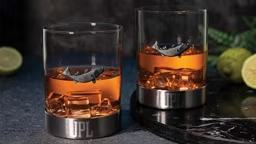
Photo Credit: Alin Meceanu/Unsplash
Can you pass our Cabin Life Skipper Test?
See also QUIZ: Test Your Wildlife Knowledge
Question #1:
You have shut off your engine and are drifting to enjoy sun on the water. Suddenly, another boat runs into your starboard side. Fortunately, there are no injuries. Who was responsible for avoiding this accident?*
* under the federal Rules of the Road, Rule 15
A) He is because you were drifting and he was under way.
B) You are because he was crossing from your starboard and you were required to maneuver to avoid collision.C) Neither boat because this was a special circumstance.
D) None of the above.
Question #2:
You are fishing a quiet backwater of your favorite lake. Weather reports called for afternoon thundershowers. What steps can you take to avoid being caught in a storm?
B) Listen for static on the AM broadcast radio, particularly the lower end of the dial.
C) Pay attention to sudden changes in wind velocity or direction.
D) All of the above.
Question #3:
Sailboats operating under sail alone always have the right of way over power-driven vessels.
B) False
Answers:
Question #1: B!
A boat is “under way” whenever it is not tied up to shore (docked), anchored, or aground. Being under way does not imply that it is “making way,” or moving through the water under its own power. Thus, your drifting boat was under way but not making way.
Although your engine was off and you were drifting, your boat was in no way disabled. And, because you were not anchored, you were considered under way even though you were not making way. As an under way vessel that is not disabled, you are required to give way to any boat crossing from your starboard side.
This does not get the other guy off the hook. The fact he ran into you indicates he had insufficient lookout and he violated Rules of the Road, Rule 2 which requires mariners to act prudently – which means not running into other boats even though he had right of way.
Question #2: D!
North America lies in the weather zone known as the Prevailing Westerlies. Storms move generally from west to east, so keeping an eye on the horizon to your west and northwest can give advance warning of approaching bad weather.
Static on your AM broadcast radio is often an indicator of distant lightning. Sometimes you can hear an approaching storm an hour or more before it becomes visible on the horizon.
Wind changes occur immediately before a squall line, which can means a quick retreat to your dock or a safe harbor is advised. Updrafts in a rapidly-building thunderstorm will suck in air from all around. For this reason it is not unusual for a storm to move directly into what appears to be a headwind.
Question #3: B!
While it is generally true that powerboats must give way to sailboats, this is not always the case. While an unlikely situation, it does occasionally happen that a sailboat comes upon a slow-moving powerboat from astern. Under Rule 13, the sailboat in this case is defined as the “overtaking vessel” and as such is required to keep clear of the powerboat.
The other situation in which a sailboat does not have right of way is in a narrow channel. A “narrow channel” is any water where obstructions (e.g. shallow water or boat docks) prevent a powerboat from maneuvering to avoid collision. In this case, Rule 9 says sailing vessels “shall not impede” the passage of another vessel that can safely navigate only within the narrow channel.
See also Boat Lifts, Canopies & Curtains
Editor’s Note: While the answers in this quiz are predicated on the federal Rules of the Road, the identical wording and intent is contained in the Rules of all 50 states.










